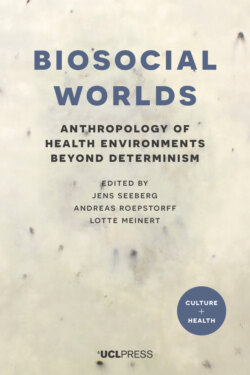Читать книгу Biosocial Worlds - Группа авторов - Страница 15
На сайте Литреса книга снята с продажи.
References
ОглавлениеAdams, V. 2016. ‘Introduction’. In Metrics: What counts in global health, edited by V. Adams, 1–17. Durham, NC: Duke University Press.
Andersen, H. C. 1846. ‘The Ugly Duckling’. In Danish Fairy Legends and Tales, 28–43. London: William Pickering.
Andersen, H. C. 1847. ‘The Drop of Water’. In Christmas Greeting to My English Friends, 19–24. London: Richard Bentley.
Andersen, J. 2003. Andersen – En Biografi. 2 vols. Copenhagen: Gyldendal.
Atran, S. 1993. Cognitive Foundations of Natural History: Towards an anthropology of science. Cambridge: Cambridge University Press.
Collier, S. J. and A. Ong. 2005. ‘Global assemblages, anthropological problems’. In Global Assemblages: Technology, politics, and ethics as anthropological problems, edited by S. J. Collier and A. Ong, 3–21. Oxford: Blackwell.
Fabian, J. 1983. Time and the Other: How anthropology makes its object. New York: Columbia University Press.
Ingold, T. 2013. ‘Ensembles of biosocial relations’. In Biosocial Becomings: Integrating social and biological anthropology, edited by T. Ingold and G. Palsson, 1–21. Cambridge: Cambridge University Press.
Keller, E. F. 2010. The Mirage of a Space between Nature and Nurture. Durham, NC: Duke University Press.
Latour, B. 1993. We Have Never Been Modern, translated by C. Porter. New York: Harvester Wheatsheaf.
Lewontin, R. C. 1993. Biology as Ideology: The doctrine of DNA. London: Penguin.
Lien, M. E., H. A. Swanson and G. B. Ween. 2018. ‘Introduction: Naming the beast, exploring the otherwise’. In Domestication Gone Wild: Politics and practices of multispecies relations, edited by M. E. Lien, H. A. Swanson and G. B. Ween, 1–32. Durham, NC: Duke University Press.
Lock, M. 1993. Encounters with Ageing: Mythologies of menopause in Japan and North America. Berkeley: University of California Press.
Lock, M. 2013. ‘The epigenome and nature/nurture reunification: A challenge for anthropology’, Medical Anthropology 32 (4): 291–308. https://doi.org/10.1080/01459740.2012.746973.
National Human Genome Research Institute. 2015. ‘All about the Human Genome Project (HGP)’. National Institute of Health. Accessed 7 January 2015. http://www.genome.gov/10001772.
Niewöhner, J. 2011. ‘Epigenetics: Embedded bodies and the molecularisation of biography and milieu’, BioSocieties 6 (3): 279–98. https://doi.org/10.1057/biosoc.2011.4.
Palsson, G. 2016. Nature, Culture, and Society: Anthropological perspectives on life. Cambridge: Cambridge University Press.
Roepstorff, A., J. Niewöhner and S. Beck. 2010. ‘Enculturing brains through patterned practices’, Neural Networks 23 (8–9): 1051–9. https://doi.org/10.1016/j.neunet.2010.08.002.
Sants, H. J. 1964. ‘Genealogical bewilderment in children with substitute parents’, British Journal of Medical Psychology 37 (2): 133–42. https://doi.org/10.1111/j.2044–8341.1964.tb01981.x.
Seeberg, J. and L. Meinert. 2015. ‘Can epidemics be noncommunicable? Reflections on the spread of “noncommunicable” diseases’, Medicine Anthropology Theory 2 (2): 54–71. https://doi.org/10.17157/mat.2.2.171.
Singer, M. 2009. Introduction to Syndemics: A critical systems approach to public and community health. San Francisco: Jossey-Bass.
Singer, M. and S. Clair. 2003. ‘Syndemics and public health: Reconceptualizing disease in biosocial context’, Medical Anthropology Quarterly 17 (4): 423–41. https://doi.org/10.1525/maq.2003.17.4.423.
Tsing, A. L. 2015. The Mushroom at the End of the World: On the possibility of life in capitalist ruins. Princeton: Princeton University Press.
Via, S. 2001. ‘Sympatric speciation in animals: The ugly duckling grows up’, Trends in Ecology and Evolution 16 (7): 381–90. https://doi.org/10.1016/s0169-5347(01)02188–7.
Willerslev, R. 2004. ‘Not animal, not not-animal: Hunting, imitation and empathetic knowledge among the Siberian Yukaghirs’, Journal of the Royal Anthropological Institute 10 (3): 629–52. https://doi.org/10.1111/j.1467-9655.2004.00205.x.
